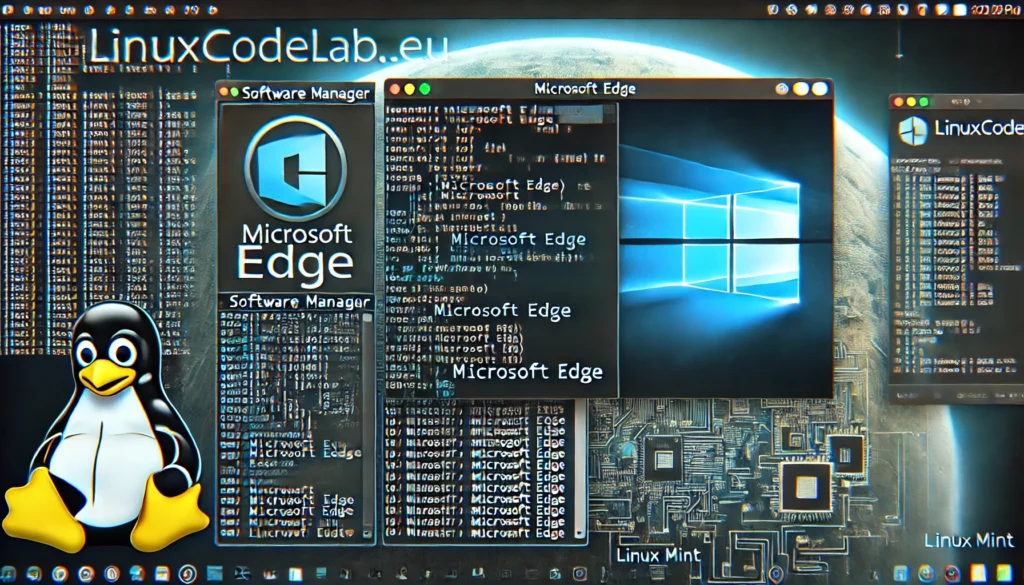How to Install Microsoft Edge on Linux Mint

Microsoft Edge is a popular web browser known for its speed, security, and compatibility with modern web standards. While it was initially exclusive to Windows, Microsoft has made Edge available on Linux. Installing Microsoft Edge on Linux Mint is a straightforward process, whether you’re using the graphical interface or the terminal. This guide will walk you through both methods, ensuring you have Edge up and running in no time.
Why Install Microsoft Edge on Linux Mint?
Microsoft Edge offers several benefits that make it worth considering for Linux users. Here are some of the key advantages:
- Speed and Performance: Edge is optimized for performance, providing fast browsing and efficient resource usage.
- Security: It includes advanced security features like SmartScreen and tracking prevention.
- Compatibility: Edge supports the latest web standards, ensuring compatibility with most websites.
- Cross-Platform Sync: You can sync bookmarks, passwords, and history across all devices using Edge.
With these benefits in mind, let’s dive into the installation process.
Method 1: Installing Microsoft Edge Using the Graphical Interface
If you prefer a user-friendly approach, installing Microsoft Edge through Linux Mint’s Software Manager is the easiest option.
Step 1: Open the Software Manager
- Click on the Menu button in the bottom-left corner of your screen.
- Search for “Software Manager” and click on it to open.
Step 2: Search for Microsoft Edge
- In the Software Manager, type “Microsoft Edge” into the search bar.
- Look for “Microsoft Edge (Beta)” or “Microsoft Edge (Dev)” in the search results.
- Select the version you prefer. The Beta version is more stable, while the Dev version offers the latest features.
Step 3: Install Microsoft Edge
- Click on the package for the selected version.
- Press the “Install” button. You may be prompted to enter your password.
- The installation process will begin, and once completed, Microsoft Edge will be ready to use.
Method 2: Installing Microsoft Edge Using the Terminal
For users who prefer the command line, installing Microsoft Edge via the terminal is quick and efficient. This method also allows more control over the installation process.
Step 1: Update Your System
Before installing any new software, it’s good practice to update your system. This ensures that all dependencies are up to date.
sudo apt update && sudo apt upgrade -y Step 2: Download the Microsoft Edge .deb Package
Microsoft provides .deb packages for Edge, making it easy to install on Debian-based distributions like Linux Mint.
- Open your terminal by pressing
Ctrl + Alt + T. - Use the following command to download the latest Edge .deb package:
wget https://packages.microsoft.com/repos/edge/pool/main/m/microsoft-edge-stable/microsoft-edge-stable_114.0.1823.51-1_amd64.deb Replace the version number with the latest available one if necessary.
Step 3: Install the Microsoft Edge .deb Package
- Once the download is complete, install the package using the
dpkgcommand:
sudo dpkg -i microsoft-edge-stable_114.0.1823.51-1_amd64.deb - If any dependencies are missing, you can fix them with the following command:
sudo apt --fix-broken install This command will automatically install any missing dependencies.
Step 4: Launch Microsoft Edge
After installation, you can launch Microsoft Edge from the terminal by typing:
microsoft-edge Alternatively, you can find it in your application menu under “Internet.”
Method 3: Installing Microsoft Edge via Microsoft’s Repository
For automatic updates and easier management, you can add Microsoft’s Edge repository to your system.
Step 1: Add the Microsoft GPG Key
To ensure the repository is trusted, you must first add Microsoft’s GPG key:
curl https://packages.microsoft.com/keys/microsoft.asc | gpg --dearmor > microsoft.gpg Move the key to the appropriate directory:
sudo mv microsoft.gpg /etc/apt/trusted.gpg.d/ Step 2: Add the Edge Repository
Next, add the Edge repository to your system’s sources list:
sudo sh -c 'echo "deb [arch=amd64] https://packages.microsoft.com/repos/edge stable main" > /etc/apt/sources.list.d/microsoft-edge.list' Step 3: Update and Install Edge
Update your system’s package list and install Edge:
sudo apt update sudo apt install microsoft-edge-stable This method ensures that Edge will receive automatic updates along with your other software.
Post-Installation Tips
After installing Microsoft Edge, here are a few tips to enhance your experience:
- Sign in to Sync Data: Use your Microsoft account to sync bookmarks, history, and settings across devices.
- Customize Settings: Adjust privacy settings, choose a theme, and manage extensions through the settings menu.
- Install Extensions: Edge supports Chrome extensions, which you can install from the Chrome Web Store.
- Set as Default Browser: To set Edge as your default browser, go to “Settings” > “Default Applications” and select Edge under “Web.”
Troubleshooting Common Issues
Occasionally, you may encounter issues when installing or running Microsoft Edge on Linux Mint. Here are some common problems and their solutions:
Problem 1: Missing Dependencies
If you see an error about missing dependencies, use the following command:
sudo apt --fix-broken install This will automatically install the necessary packages.
Problem 2: Edge Won’t Launch
If Edge doesn’t launch after installation, try running it from the terminal to see any error messages. You can also reinstall Edge by following the installation steps again.
Problem 3: Update Issues
If Edge doesn’t update automatically, you can manually check for updates by running:
sudo apt update && sudo apt upgrade This ensures you have the latest version.
Conclusion
Installing Microsoft Edge on Linux Mint is a simple process, whether you choose the graphical interface, terminal, or repository method. Each method provides a reliable way to access a powerful, fast, and secure browser on your Linux system. With Edge installed, you can enjoy a seamless browsing experience with the added benefits of Microsoft’s cross-platform ecosystem.
Thank you for reading the article! If you found the information useful, you can donate using the buttons below:
Donate ☕️ with PayPalDonate 💳 with Revolut






















